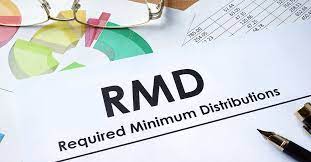How to Calculate Required Minimum Distribution (RMD)
May 27, 2023 By Susan Kelly
You are obligated to take what are known as required minimum distributions (RMDs) from most retirement plans, except for Roth IRAs. The minimum age required to withdraw money from retirement accounts will rise to 72.5 from 70.5 in 2020. The SECURE 2.0 Act, on the other hand, increased the required minimum distribution age to 73 years old for those who would be 72 years old in 2023. As a result, you must take first RMD by April 1 of year, following which reach 72 (or 73 in 2023). So, how to calculate annual required minimum distribution (RMD) for traditional IRA?
The amount you are required to withdraw is based on the current balance in your account and the IRS's definition of your expected life span. If you have more than one retirement account, you can withdraw money from each of those accounts, or you may add up the amounts of your RMDs and withdraw money from one or more of the accounts. RMDs for a particular year must be taken by the end of that year, on December 31. However, you are granted extra leeway the first year you are mandated to take an RMD. A financial adviser is someone who can assist you if you have any issues with the planning of your retirement income.
What Is a Required Minimum Distribution (RMD)?
The required minimum distribution (RMD) is the minimal amount that must be withdrawn from a tax-deferred retirement plan to trigger taxation at the ordinary income rate. The SECURE 2.0 Act increased the RMD demarcation age to 73 for persons turning 72 in 2023, even though the age to commence RMDs was 72 and would remain at that age until the end of 2022.
When you reach this point in your life, you usually must start taking an RMD by December 31 each year. We will discuss the various exemptions and how to compute RMDs. But first, let's look at the different sorts of plans and determine which ones need RMDs and which don't. The following types of retirement accounts are subject to RMDs:
- Traditional IRAs
- SEP IRAs
- Rollover IRAs
- Most 401(k) and 403(b) plans
- SIMPLE IRAs
- Most small business accounts
However, required minimum distributions do not apply to Roth IRAs since the money contributed to these accounts is obtained via earnings that have been taxed. Required minimum distributions do apply to inherited IRAs.

RMD Deadlines and Exceptions
You have until April 1 of year, after which you are first obliged to take an RMD to postpone making the withdrawal from your account. However, you will be required to take an additional RMD no later than December 31 of that year. Because Required Minimum Distributions (RMDs) qualify as taxable income, it's possible that taking two RMDs in the same year might push you into a higher tax rate overall. This choice may be easier to make with the assistance of an expert in taxes, and a financial adviser who is also knowledgeable about taxes may assist you in determining which accounts to access first and in what sequence.
If you are still employed by the firm responsible for sponsoring your 401(k) plan or another employer-sponsored account, you may put off taking your RMD for an additional year. You are permitted to defer the payment of your first RMD until after you have retired as long as you do not control more than 5% of that firm. You must begin taking RMDs; however, if you leave that firm when you become 72 or 73 in 2023, you have already reached that age. When calculating the RMDs for your conventional IRA and your 401(k), you would use the same tables and follow the same methods as you would when calculating the RMDs for your 401(k).
How to Avoid RMDs

Your IRA or 401(k) assets may be rolled over into a Roth IRA or Roth 401(k), a straightforward option that does not violate laws and is legal. The Internal Revenue Service will not compel you to withdraw RMDs from these accounts, but doing so will result in a higher tax bill for the year you make the change. In principle, you may invest money in a Roth IRA or Roth 401(k) until the day you die, and that money will continue to grow tax-free even after your passing.
If your assets have been held in these accounts for at least five years, you can withdraw them after attaining age 59.5 without incurring any taxes or penalties, provided that you meet the requirements. You can also make a tax-free and penalty-free withdrawal of your contributions at any time.








